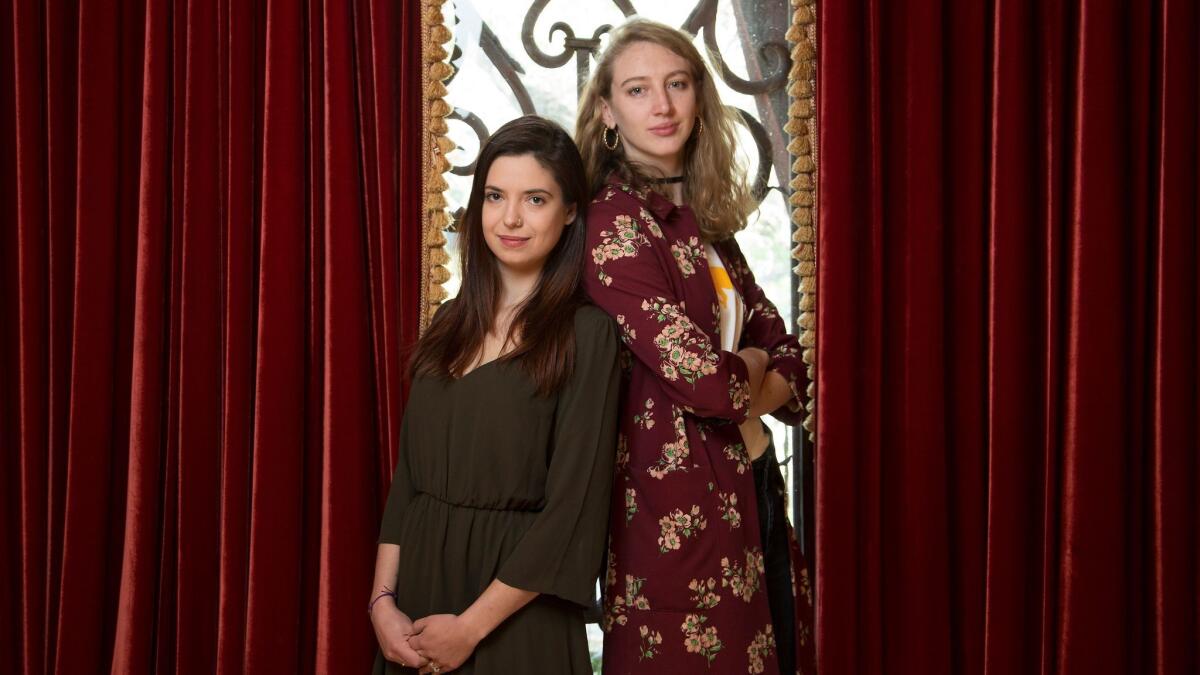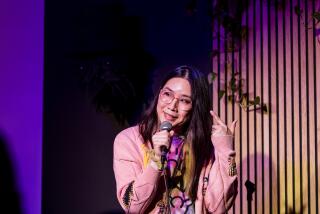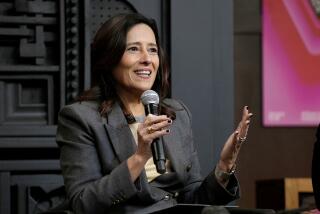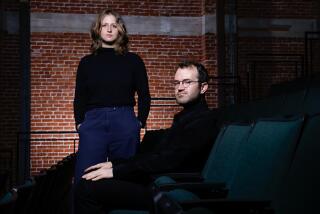Twentysomething female entrepreneurs shake up Topanga’s annual film festival with ‘deeper’ relaunch

The Topanga Film Institute just finished its 13th film festival.
On the grounds of an ornate estate in the hills of Topanga Canyon, a crowd of 100 or so film lovers is discussing a batch of selectively screened international shorts. With strands of fairy lights twinkling in the breeze, coyotes howling in the distance and frogs making mating calls (loudly) in the nearby creek, it’s easy to forget that the cityscape of downtown Los Angeles is just a 40-minute drive away.
“It was kind of perfect because our logo is a coyote,” said festival organizer and Topanga Film Institute director Devon Baur. “Up here, you almost can’t believe that you’re still in L.A.”
Baur, 24, and TFI producer and programmer Shauna Farrell, 26, are the two female entrepreneurs responsible for last weekend’s festival, having recently taken the reins in its 13th year. They revamped it by giving it its first permanent home in years and by offering only 100 seats at a screening at a time to make it a more intimate experience overall.
Featuring a mix of short films, dance films and virtual reality (VR) films, the festival, whose theme is “content as catalyst for conversation,” was dubbed one of the coolest film festivals in the world by Filmmaker Magazine. But being the young wunderkinds responsible not just for running but revamping an entire festival does not come without its fair share of hiccups.

“It’s been interesting because for a lot of people, it takes 10 minutes to take us seriously,” Baur admitted. “At first we felt like that was maybe a bad thing or an obstacle we had to overcome but then we found strength in it.”
“It helped a lot when we sort of took that on as a strength and started using it as an integral part of what we are and what we’re doing,” chimed in Farrell. “It boosted our own confidence in our way of presenting ourselves.”
With festivals cropping up seemingly in every neighborhood, it behooves festival runners not only to put together a successful lineup of diverse, inclusive films, but also to set themselves apart from the pack. stival in the country. Topanga’s film festival, which ended Feb. 12, has idiosyncrasies in spades with its idyllic mountainside locale, affordable all-access passes ($90 for all three days), and a selection of five VR films on offer. But putting together a homegrown festival, even one with some history, is no easy feat.
To support the overhead costs of running a festival (and to support themselves), Baur and Farrell had to take on several part-time jobs. Farrell does social media and online marketing for another festival, is a script reader and works at a theater. Baur, whose mother, Sara Baur Harding, founded the festival in 2004 in her garden, worked in a gift shop, assisted with an essential oil business, and does ad layout for Topanga’s Messenger Mountain News.
“This year’s festival started with a budget of zero dollars and grew into what it was through collaboration with lots of different people who got together behind our vision,” said Farrell. “TFF was and is a grassroots community effort.”
Held on the grounds of an estate called Redwood just off of Topanga Canyon Boulevard, the festival made its headquarters in a converted hair salon with an abundance of elaborate chandeliers and gilded detailing that felt very “Game of Thrones” meets “Boardwalk Empire.” It evoked the glitz and glamour of bygone eras, making it the perfect space for the newly downsized festival 100 people at a time for screenings.

“The festival in the past has been really transient,” said Baur. After starting out in Baur Harding’s garden in 2004, the festival has been held in a different location around Topanga every year.
The pair instituted three key changes this year with the capped audience size, fixed location and late winter (a.k.a. spring in California) premiere date. “Having it in one location and having it smaller made it a super magical boutique, intimate experience,” Baur said. “It was such a mix of audience that we actually had homeless people and celebrities in the same room. It totally fed the mystique of Topanga and was electric because of it.”
Some of the films screened include immersive VR installations from artists such as Milica Zec, whose film “Giant,” about an active war zone, was shown in a makeshift bunker, and Ben C. Solomon, whose powerful, 360-degree film “The Fight for Falluja” explores the battles between Iraqi forces against Islamic State and offers a glimpse into the future of journalism.
“I think the work does kind of speak for itself,” said Baur. “This festival in comparison with a lot of other festivals felt very youthful and our audience was very multigenerational. We were definitely telling the stories we want to hear. And some of them didn’t pay off. We took the audience out of their comfort zone and brought them stories they wouldn’t have seen otherwise.”
Although the three-day festival won’t return until next February, up next are year-round programs including smaller screenings, artist talks, panels and special events starting with a small screening of a feature film on the first Friday in March.
“We want to use this as the launch,” Baur said. “The festival next year will hopefully be not bigger but better, if that makes sense. There’s this great storyteller who said, ‘If you had the chance, would you grow wider or deeper?’ And so we want to work on our roots and grow deeper.”
Follow me on Twitter @sonaiyak
More to Read
Only good movies
Get the Indie Focus newsletter, Mark Olsen's weekly guide to the world of cinema.
You may occasionally receive promotional content from the Los Angeles Times.







